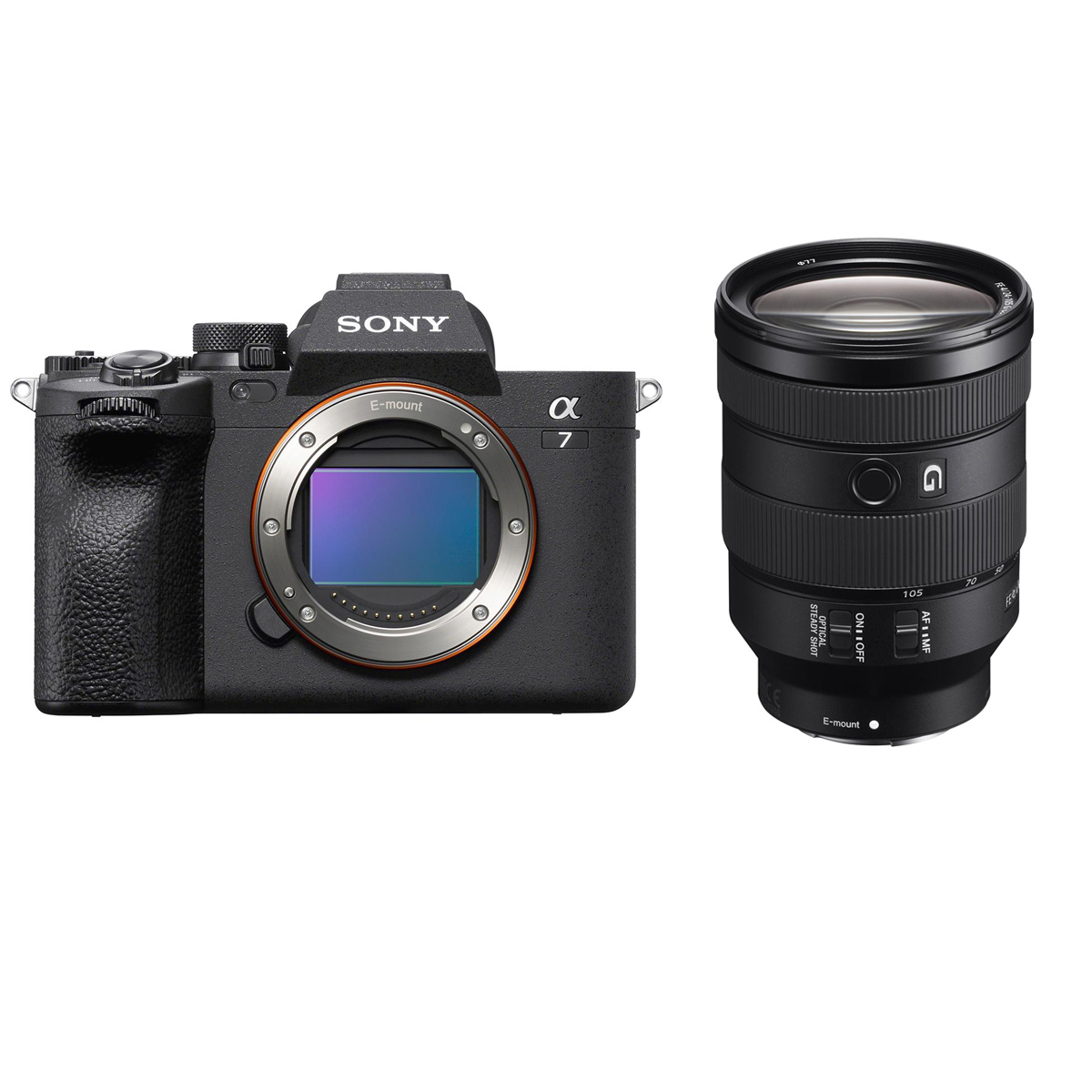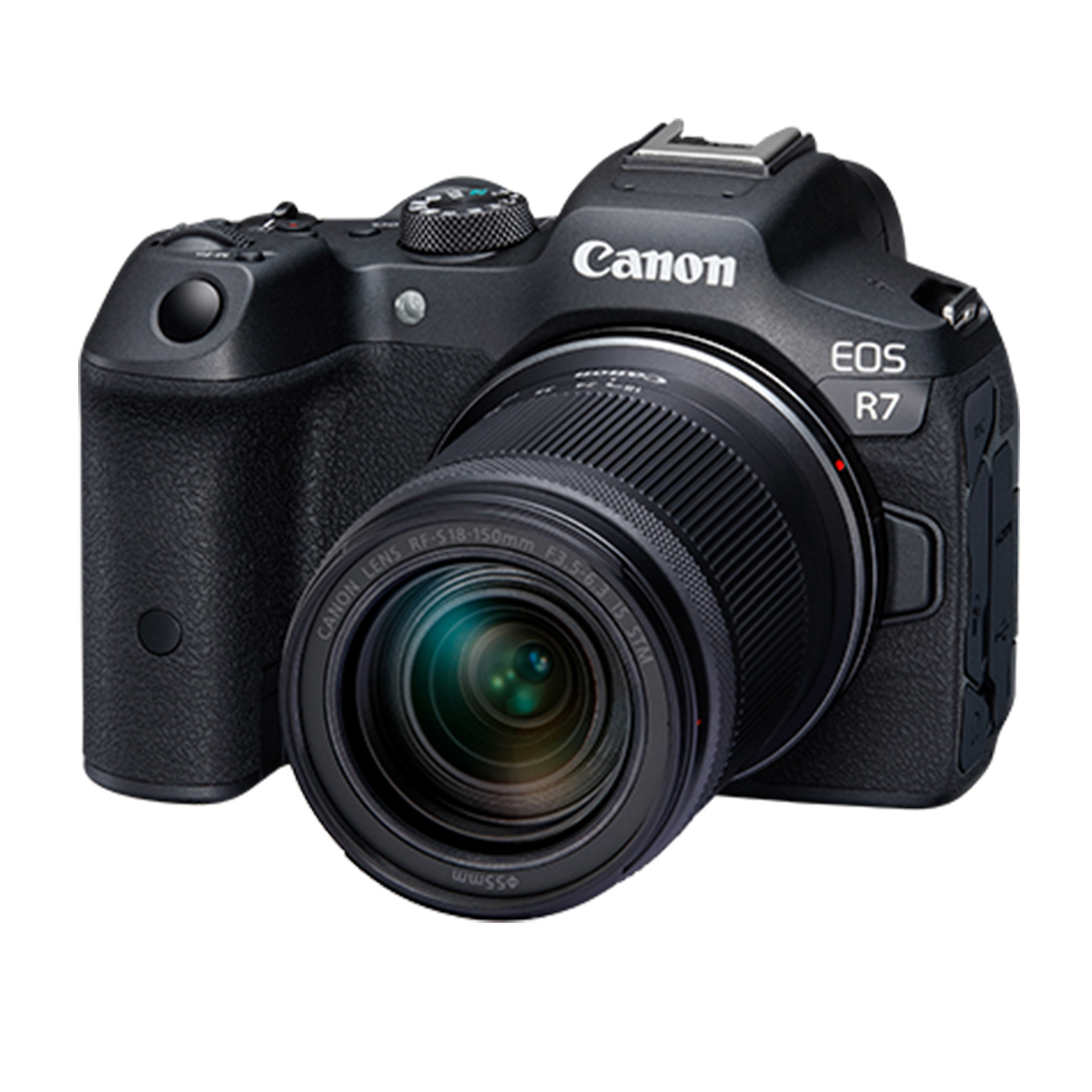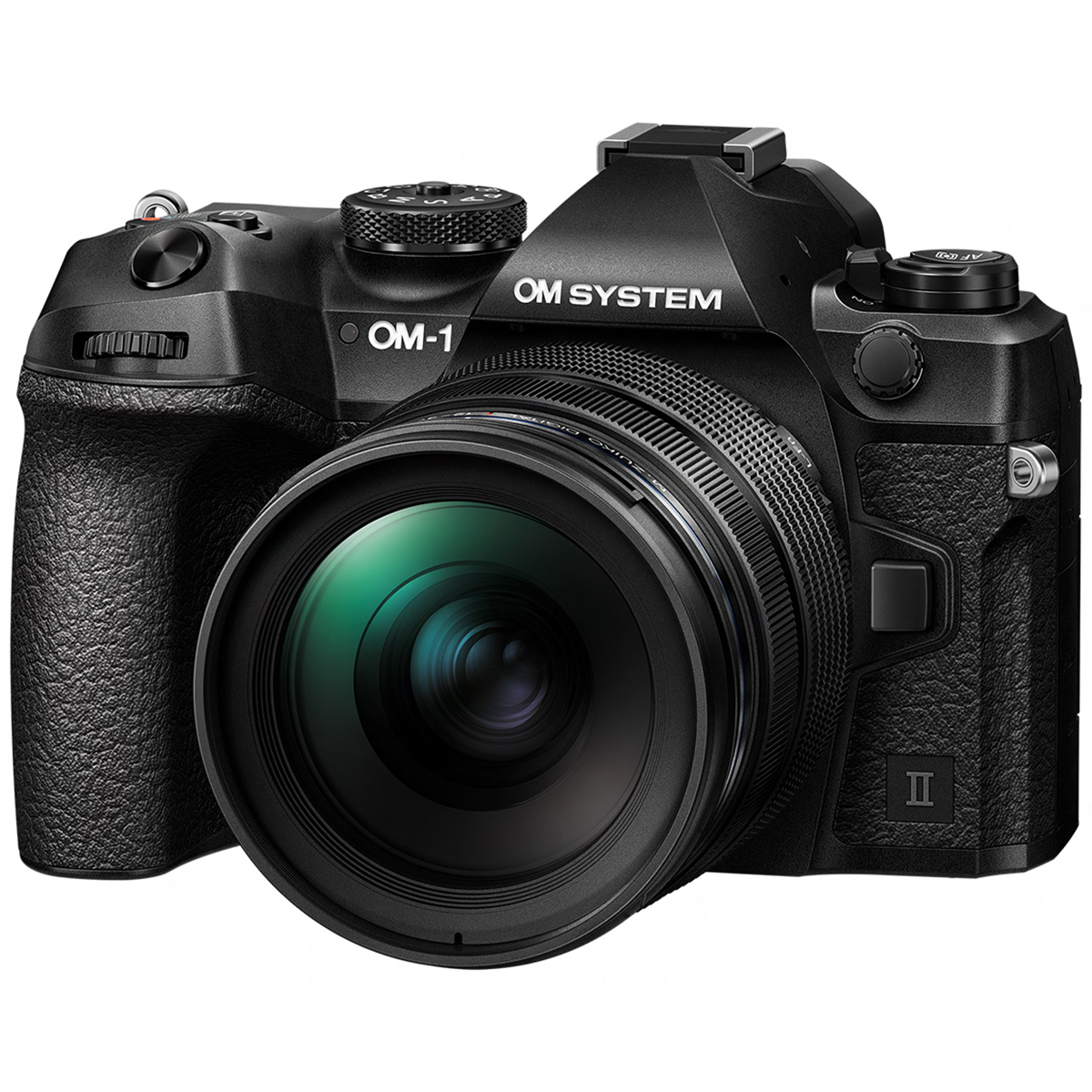Best Cameras + Lens Kits for Landscape + Wildlife Photography (2025)

When someone recently asked me what camera and lens kit I recommend for both landscape and wildlife photography, my first thought was: it’s tough to do both really well with just one lens.
Landscapes usually call for a wide lens (like 16–35mm) to capture sweeping views, while wildlife typically requires a long telephoto (200mm and up).
If I had to give one all-around recommendation, my top pick is the Sony α7 IV paired with the FE 24-105mm F4 G OSS. It’s versatile enough for landscapes and general travel photography, and you can later add the Sony 200–600mm lens if you want to get serious about wildlife. This combo gives you professional-level image quality in a setup that can grow with you over time.
✔️ One setup that handles landscapes + general wildlife
✔️ Professional-level image quality in all conditions
✔️ Flexible kit you can grow with over time
That said, not everyone needs a full-frame powerhouse right away — and there are excellent crop-sensor and travel-friendly kits that strike a better balance for beginners, budget-conscious photographers, or frequent travelers.
In this post, I’ll walk through the best options at different levels so you can choose the kit that fits your goals, budget, and travel style.
Why Landscape & Wildlife Generally Require Different Lenses
One of the first things to understand about pairing cameras and lenses is that landscapes and wildlife have very different needs.

- Landscapes call for wide angles. A lens in the 16–35mm range (or wider) is ideal for capturing sweeping vistas, mountain ranges, or dramatic skies. Wide lenses let you pull more of the scene into the frame and emphasize depth.
- Wildlife demands telephoto reach. To get close to birds, animals, or distant subjects without disturbing them, you’ll want a lens in the 200–600mm range. Telephotos allow you to fill the frame with your subject and still keep safe, respectful distance.
- What about “superzooms”? Lenses that claim to cover everything (like 18–300mm) do exist, but they come with tradeoffs. While they’re convenient, they often suffer from softer image quality, slower autofocus, and weaker low-light performance. For serious results, especially if you’re traveling for photography, a two-lens setup is usually the smarter choice.
While a two-lens setup will always give you the most flexibility, there are kits that strike a great balance for travelers who want strong results without hauling a full arsenal.
That’s why my top pick starts with the Sony A7 IV, a camera body that pairs beautifully with versatile lenses like the 24–105mm F4 G OSS.
1. Top Pick: Mirrorless All-Around Performer: Sony A7 IV + FE 24-105mm F4 G OSS Lens
If you want the best all-around setup for both landscapes and wildlife, the Sony A7 IV paired with the 24–105mm f/4 G OSS lens is my top recommendation:
✔️ One setup that handles landscapes + general wildlife
✔️ Professional-level image quality in all conditions
✔️ Flexible kit you can grow with over time
Here’s what makes the Sony A7 IV body such a strong choice for travel, landscapes, and wildlife:
📷 Sony A7 IV (Body Only) — Key Details
- Battery Life: Approx. 580 shots (LCD) / 520 shots (viewfinder), using NP-FZ100
- Sensor: 33MP full-frame Exmor R CMOS
- ISO Range: 100–51,200 (expandable to 50–204,800)
- Autofocus: 759 phase-detection AF points, real-time Eye AF for humans/animals/birds
- Continuous Shooting: Up to 10 fps with AF/AE tracking
- Viewfinder: 3.68M-dot OLED electronic viewfinder
- LCD: 3-inch fully articulating touchscreen, 1.03M dots
- Video: 4K 60p (Super35 crop), 4K 30p full width, 10-bit 4:2:2 internal recording
- Stabilization: 5-axis in-body image stabilization (IBIS)
- Media: Dual card slots (CFexpress Type A/SD UHS-II)
- Weather Sealing: Dust- and moisture-resistant magnesium alloy body, built to handle rain, snow, and coastal spray.
- Connectivity: Wi-Fi, Bluetooth, USB-C 3.2, full-size HDMI
- Weight: ~658 g (1.45 lbs) body only
- Release date: Late 2021
- Processor: BIONZ XR
Once you’ve got the A7 IV body, the FE 24–105mm F4 G OSS lens is the perfect partner — it complements the camera with a versatile zoom range that balances wide landscapes and closer wildlife shots:
🔍 Sony FE 24–105mm F4 G OSS (Lens) — Key Details
- Focal Length: 24–105mm (full-frame)
- Aperture: Constant f/4 maximum, f/22 minimum
- Optical Design: 17 elements in 14 groups (incl. 4 aspherical, 3 ED glass)
- Coatings: Nano AR + Fluorine coatings for flare resistance & easier cleaning
- Image Stabilization: Optical SteadyShot (OSS), supports combo with IBIS
- Minimum Focus Distance: 0.38 m (1.25 ft)
- Max Magnification: 0.31×
- Filter Size: 77 mm
- Aperture Blades: 9 (rounded diaphragm for smoother bokeh)
- Weight: 663 g (23.4 oz)
- Dimensions: 83.4 mm × 113.3 mm (3.3 × 4.5 in)
- Mount: Sony E-mount (full-frame FE)
- Weather Sealing: Dust- and moisture-resistant design for outdoor shooting.
- Release date: 2017
- Close-focus versatility: 0.31× magnification makes it decent for semi-macro shots
- Lens hood: Ships with ALC-SH152 petal hood
- 33MP full-frame sensor with outstanding dynamic range
- Versatile 24–105mm zoom covers wide landscapes + mid-telephoto
- Excellent autofocus with animal + eye tracking (great for wildlife)
- Strong low-light and video performance (4K 60p, 10-bit)
- Weather-sealed, durable build with dual card slots
- Premium price point — body + lens are an investment
- Bulkier and heavier than crop-sensor or Micro Four Thirds kits
- 105mm max reach is limited for wildlife until you add a telephoto
- RAW file sizes are large (requires good storage + fast cards)
- Menu system has a learning curve for beginners
📷 Lens Upgrade Path for the Sony A7 IV:
👉 Add the Sony 200–600mm f/5.6–6.3 G OSS for serious wildlife reach
👉 Add the Sony 16–35mm f/4 (or f/2.8 GM) for wide landscapes

2. Budget-Friendly Pick: Canon EOS R7 RF-S18-150mm F3.5-6.3 IS STM Lens Kit
If the Sony A7 IV feels like too big of a leap, the Canon EOS R7 is an excellent crop-sensor alternative that still delivers impressive results for travel, wildlife, and landscapes. Paired with the 18–150mm starter lens, this kit covers a wide range of everyday shooting needs.
✔️ Excellent autofocus with reliable animal tracking
✔️ Starter zoom handles a variety of travel situations
✔️ Affordable, approachable option for beginners and enthusiasts
📷 Canon EOS R7 — Key Details
- Sensor: 32.5MP APS-C CMOS (crop sensor, 1.6×)
- ISO Range: 100–32,000 (expandable to 51,200)
- Autofocus: Dual Pixel CMOS AF II, subject/animal/bird tracking
- Continuous Shooting: Up to 15 fps mechanical / 30 fps electronic shutter
- Stabilization: 5-axis In-Body Image Stabilization (IBIS), up to 7 stops with compatible lenses
- Video: 4K 60p (oversampled from 7K), 4K 120p (cropped), 10-bit 4:2:2 C-Log 3
- Viewfinder: 2.36M-dot OLED EVF, 120Hz refresh
- LCD: 3-inch fully articulating touchscreen, 1.62M dots
- Media: Dual UHS-II SD card slots
- Connectivity: Wi-Fi, Bluetooth, USB-C, micro-HDMI
- Battery Life: Approx. 500 shots (LP-E6NH)
- Weight: ~612 g (1.35 lbs) body only
- Weather Sealing: Dust- and moisture-resistant body
🔍 Canon RF-S 18–150mm F3.5–6.3 IS STM Lens — Key Details
- Focal Length: 18–150mm (equivalent to ~29–240mm on APS-C)
- Aperture: f/3.5–6.3 max, f/22–40 min
- Optical Design: 17 elements in 13 groups
- Image Stabilization: Up to 4.5 stops (6.5 with IBIS)
- Minimum Focus Distance: 0.17 m (wide) / 0.45 m (tele)
- Max Magnification: 0.44× (at 35mm, “semi-macro” capability)
- Filter Size: 55 mm
- Focus Motor: STM (quiet, smooth for video)
- Dimensions: 69 mm × 84.5 mm (2.7 × 3.3 in)
- Weight: ~310 g (0.68 lbs)
- Mount: Canon RF-S (APS-C RF mount)
- Excellent Dual Pixel AF II with subject/animal tracking (great for wildlife)
- Lightweight and compact — easy for travel
- 32.5MP crop sensor delivers sharp images with good reach
- Starter lens (18–150mm) covers wide-to-telephoto in one kit
- Affordable entry point compared to full-frame
- Crop sensor limits low-light depth and dynamic range vs full-frame
- 18–150mm lens is versatile but not pro-level sharp throughout the range
- Limited background blur (bokeh) compared to faster lenses
- Smaller ecosystem of RF-S lenses (though adaptable)
- Video features solid, but rolling shutter can appear in certain situations
📷 Lens Upgrade Path for the Canon EOS R7:
👉 Add the RF 100–500mm or 150–600mm for serious wildlife reach
👉 Add the RF 16mm prime for wide landscapes

3. Travel-Ready & Compact Kit: OM System OM-1 Mark II + 12-100mm f/4 PRO
For travelers who want one camera and lens that can cover both sweeping landscapes and closer wildlife shots without juggling gear, the OM-1 Mark II paired with the 12-100mm f/4 PRO lens is an excellent all-in-one setup. The 24–200mm equivalent zoom gives you true versatility — wide enough for dramatic vistas and long enough for wildlife you’ll encounter on the trail — all in a lighter, weather-sealed body compared to full-frame kits.
✔️ Equivalent 24–200mm range for both landscapes + wildlife
✔️ 8.5 stops of image stabilization keeps handheld shots sharp
✔️ Rugged IP53 weather-sealed body for all conditions
📷 OM-1 Mark II — Key Details
- Sensor: 20.4MP stacked BSI Live MOS (Micro Four Thirds)
- Processor: TruePic X
- ISO Range: 200–25,600 (expandable)
- Autofocus: Cross Quad Pixel AF, 1,053 points, improved AI subject detection (birds, animals, humans)
- Continuous Shooting: Up to 50 fps with AF/AE, 120 fps in Pro Capture mode
- Image Stabilization: Up to 8.5 EV stops (body + lens sync IS)
- Video: 4K 60p, OM-Log, 10-bit capture
- Viewfinder: 5.76M-dot OLED EVF
- LCD: 3-inch fully articulating touchscreen, 1.62M dots
- Weather Sealing: IP53 (splash, dust, freeze-proof)
- Weight: ~599 g (1.32 lbs) body only
🔍 M.Zuiko 12–100mm f/4 PRO Lens — Key Details
- Equivalent Focal Length: 24–200mm (full-frame equivalent)
- Aperture: Constant f/4 max, f/22 min
- Optical Design: 17 elements in 11 groups
- Stabilization: Sync IS when paired with OM-1 (up to 7.5 stops)
- Minimum Focus Distance: 0.15 m wide / 0.45 m tele
- Max Magnification: 0.30×
- Filter Size: 72 mm
- Weight: 561 g (1.24 lbs)
- Build: Weather-sealed, PRO-series construction
- All-in-one zoom range (24–200mm equiv.) perfect for landscapes + general wildlife
- Excellent IBIS + Sync IS means handheld shots are sharp, even at longer focal lengths
- Compact and lighter than full-frame equivalents
- Weather-sealed — great for rain, snow, or dusty trails
- High-speed bursts + AI AF tracking handle moving wildlife
- Micro Four Thirds sensor = less low-light performance than APS-C/full-frame
- 200mm equiv. is solid for travel wildlife but limited for small/distant birds
- f/4 aperture isn’t as fast as f/2.8 for low light or shallow depth of field
- Ecosystem smaller compared to Sony/Canon full-frame
📷 Lens Upgrade Path for the OM System OM-1 Mark II:
👉 Add the M.Zuiko 150-400mm f/4.5 TC1.25x PRO for serious wildlife reach
👉 Add the M.Zuiko 8-25mm f/4 PRO for ultra-wide landscapes

4. Other Notable Options
Not every photographer fits neatly into the kits above. Depending on your shooting style, brand loyalty, or budget, these alternatives may be a better match:
- Nikon Z8 + 24–120mm and 100–400mm – A pro-level powerhouse with incredible dynamic range and autofocus. Great if you want a system that competes head-to-head with Sony full-frame.
- Fujifilm X-T5 + 16–80mm – Beloved by creative shooters who love Fuji’s film simulations. A lighter APS-C kit with strong colors and travel-friendly handling.
- Sony RX10 IV (bridge camera) – A “do-it-all” budget option with a built-in 24–600mm lens. Not as sharp as interchangeable lenses, but unbeatable convenience if you don’t want to swap gear.
Whether you go with one of the top kits above or one of these notable alternatives, the next step is learning how to get the most out of your gear. That’s where a few smart travel photography tips come in.

Travel Photography Tips
Even with the right kit, a few smart habits will make your landscape and wildlife photos stand out:
- Carry both a wide + telephoto when possible. A wide lens captures sweeping landscapes, while a telephoto gets you closer to wildlife without disturbing them. Even a compact travel zoom can save the day if you don’t want to swap too often.
- Use lightweight tripods or monopods. Long lenses magnify shake, especially in low light or at 400–600mm. A travel tripod or monopod keeps shots sharp without weighing you down.
- Protect your gear with waterproof bags. Weather can shift fast in the mountains, on the coast, or on safari. A rain cover or dry bag ensures your gear survives the elements. For more on this, check out my guide to winter photography tips and my post on surf photography.
- Practice quick lens changes (or carry two bodies). Wildlife won’t wait for you to fumble. Knowing how to swap lenses fast — or having a second body ready — means you won’t miss the shot.
🤩 The Sony α7 IV paired with the FE 24-105mm F4 G OSS is my top overall pick for landscape & wildlife photographers because it combines pro-level photo and video quality, fast & accurate autofocus, plus a versatile zoom range in a travel-friendly build.

Final Thoughts
At the end of the day, there’s no single “one-lens-for-everything” solution. Every setup comes with trade-offs — reach vs. weight, speed vs. price, versatility vs. image quality.
The best kit is always the one you’ll actually carry. A smaller, lighter camera that comes with you on every hike or trip will beat a pro body that stays at home.
✅ For more photography guides, check out these posts:
📸 The Top 5 Best Camera Straps For Backpacking
📸 10 Best Travel Photography Tips for Cameras & Phones Photography
📸 15 Ways To Capture The Best Landscape Travel Photography
📸 The Best Cameras For Landscape Photography
📸 Best Cameras for Surf Photography
📸 Best Cameras for Winter Photography
📸 How To Capture The Best Landscape Travel Photography For Breathtaking Scenes
📸 Amazing Lake Photography Ideas (Comprehensive Guide)
📸 The Best Camera Strap For Hiking And Backpacking (+ Alternatives)
📸 The Best Travel Photography Gear For Beginners (for all types of photography)

Planning Your Trip? Use my favorite resources:
Accommodation: Booking.com
Rent a Car: Discover Cars
Travel Insurance: Allianz
Flights: WayAway
Tours: Viator.com
Airport Transfers: KiwiTaxi



